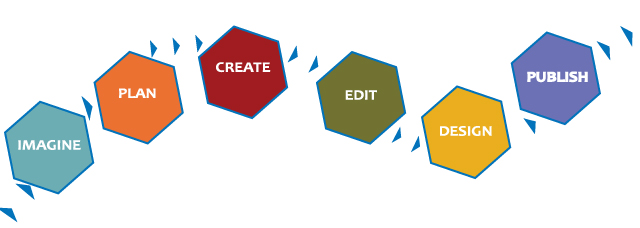Take One Step at a Time in Creating Your Family History Book
Biff Barnes
Family history books are complicated. They often contain not only text, but endnotes, appendices, a bibliography of sources, charts, and images. Family historians who want to self-publish often find this complexity overwhelming. We get it.
The problem is that many people try to do too many things at once.
In our book for family historians, Stories To Tell – An Easy Guide to Self-Publishing Family Histories and Memoirs, we explain a six-step process for creating a book. The steps are imagine, plan, create, edit, design, and publish. It saves you a lot of headaches to take these steps one at a time. Unfortunately, many people think they need to design their book at the same time they are trying to get it written. They attempt to place the photos, pedigree charts and other features of the book into the text. But the text isn’t finished, so when the author revises it, everything moves around. It can be very frustrating.
The easiest way to avoid the resulting confusion is to create two files at the beginning of the process, one for the text of the book, the other for any images, photos, charts, or timelines you want to include. Concentrate on one at a time. First hone in on the text. Get a draft of the book written. When you have a first draft finished, you’ll need to edit the text. A well edited text is the mark of a quality book. Make any of the revisions and put the text aside.
When you have the final version of the text locked down, you can shift your focus to designing your book. The text will not change once it is edited and revised, so all you need to do at this point is to place the images in the text. With professionally designed books, this is done using Adobe InDesign. This software is very complex and has a very steep learning curve. As a result many authors find that it is better to turn the design process over to a professional book designer. Whether you work with a book designer or do your own design, look at all of the things you have gathered in your image file – photos and other illustrations, pedigree charts, timelines, etc. and decide where to place them in the text. Your image file will also be important when you are ready to choose the photos or other graphical elements for your book’s cover.
By taking the process of creating your text, editing, and design a step at a time the result is less frustration and a more beautiful finished book.
